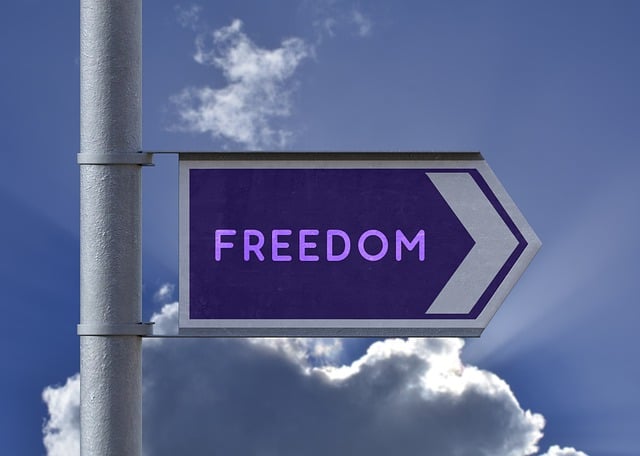Recently BrainWorx launched a virtual interview series that they called the ADHD Toolbox Live with more than 20 speakers involving both live and prerecorded interviews. Some of these highly informative interviews are available on the BrainWorx blog. The Mayo Clinic explains that Attention-Deficit/Hyperactivity Disorder (ADHD) is a chronic condition in some children and adults that cannot be cured but can be managed through behavioural interventions and medication.
Mel Robbins in her podcast, Six Surprising Signs of Adult ADHD, draws on her extensive research and interviews with leading ADHD experts to explain that ADHD is “a chronic neurobiological disorder” that has an impact on the brain both structurally and chemically and can affect how the brain communicates amongst its various parts.
Duane Gordon, President of the Attention Deficit Disorder Association (ADDA), explained in his BrainWorx Toolbox presentation that ADHD results in “differences in brain development” that can negatively impact capacity to pay attention, to exercise self-control and to remain inactive (“being hyperactive” – a description often given to “naughty children” at school).
Misconceptions about ADHD
Duane was at pains to explain that there are many misconceptions/myths surrounding ADHD. These misconceptions include:
- The belief that ADHD is only a children’s disorder – increasingly adults are diagnosed with it when an adult (however, research shows that ADHD is formed before 12 years of age)
- The assumption that people with ADHD “lack intelligence” (the opposite is often true)
- The exhortation that people with ADHD should just “try harder” (which Duane explains is the most damaging of all misconceptions because it attacks a person’s self-esteem as they are already doing everything in their power to “keep afloat” with everyday demands).
- The perception that ADHD is a “little inconvenient” (Duane explains , however, that ADHD can deeply affect every facet of your life – such as financial health, career and relationships). Duane, who himself has ADHD, comments that it “digs into every aspect of your life”.
Symptoms of Adult ADHD
In her podcast of the six surprising signs of adult ADHD, Mel Robbins identifies the following key characteristics:
- Hyperfocus – ability to focus intensively in particular settings (e.g. when working on a creative project or writing) despite an inability to focus in other settings (e.g. with children, hyper-focus on computer games but inability to pay attention in class at school)
- Difficulty controlling emotions – can be impulsive, easily frustrated and reactive
- A tendency to shop impulsively and over-spend – Mel cites Dr. Amen who explains that the compulsive shopping or drug and alcohol abuse can be an attempt to “stimulate the brain with a dopamine rush” (a chemical that has a role in learning, attention & mood)
- Time management problems reflected in lateness, being the last person to arrive
- Capacity to function at a high level – workaholism (including “all-nighters”) and entrepreneurial success
- Highly self-critical – constantly “beating up” on oneself for “disappointing everyone”.
Mel, however, drawing on the work of Dr. Ellen Littman and others who co-authored the book, Understanding Girls with ADHD, points out that the ADHD symptoms of girls are often different to those of boys. She explains that this contributes to the fact that adult women are often diagnosed with ADHD later than men. Mel herself was diagnosed with ADHD at the age of 47 (by accident when her son was formally diagnosed with the same condition). She explains that the major difference between women (girls) and men (boys) with ADHD is that the symptoms are typically internal rather than external.
Boys, for example (like her son), express their symptoms physically such as impulsive physical behaviour, fidgeting, inability to keep still, inability to pay attention and concentrate, easily distracted, continuous leg movement and a tendency to interrupt proceedings (such as classes). Girls/women (like herself) tend to daydream and are disorganised and forgetful, and are hard on themselves, seeing their ADHD as a “character flaw”.
Mel notes, again drawing on the work of Dr. Littman and colleagues, that the outcomes for girls tend to be worse than those for boys – resulting in low-self-esteem, self-loathing, eating disorders, and suicidal ideation. In common with boys, girls can experience “overwhelm” but Ellen Littman contends that outcomes for girls (and women) can be “horrendous”.
Managing Adult ADHD
Duane argues that a starting point is to “embrace” your ADHD. By this, he means to “look for aspects that make you special” such as storytelling, leadership capability, capacity for public speaking and creativity. He points out that some of the world’s leading entrepreneurs have been diagnosed with ADHD as adults. He explains that when people are first diagnosed as adults they tend to experience shock, feel shame, resist the diagnosis and tend to become absorbed in regret. He notes, however, that many of the forward-looking organisations are seeking out people who are neuro-divergent because they “think outside the box”.
Duane was diagnosed with ADHD as an adult in similar circumstances to those of Mel – his own diagnosis was accidental when his daughter was diagnosed with ADHD. He explained that when he was first diagnosed with ADHD he did not have a phone number on his business card because he could not talk to people – now as President of ADDA he talks to people all over the world about the condition and its personal and social impacts.
Duane strongly advocates for self-compassion, which involves not only self-acceptance but also self-forgiveness. He explains that there is often a stigma attached to ADHD because “neuro-typical” people tend to attach negative meanings to the ADHD condition, they are blind to the unique talents of those people who are “neuro-divergent”. Kevin Bailey, a Certified ADHD Coach, argues in his ADHD Toolbox interview, that we should acknowledge that “we’re all perfectly imperfect” and suggests that adults with ADHD could employ his strategy of acting “as fast as I can, as slow as I need”. His interview with the Wired for Winning video podcast relates his experience of “otherness” as a neuro-diverse, black person with ADHD and Autism.
Duane counsels us that everyone’s ADHD is different – he comments that his daughter’s ADHD “is different to mine”. Accordingly, it is not possible to offer a precise solution for an individual adult for managing their condition, there is, in his words, a “group of solutions” that others have found helpful and can be used as personal experiments to see what works for you.
Duane strongly recommends the social support offered by a community of people with adult ADHD such as that offered by ADDA, the largest such organisation in the world. Not only does ADDA provide resources but it also facilitates exchange between members so that people can share their stories, the manifestations of ADHD in their lives and the solutions that have worked for them. This is similar to the healing power of storytelling embraced by the Creative Meetups hosted by the Health Story Collaborative (HSC). Duane suggests that organisations such as ADDA help adults to “take your ADHD and discover it for yourself” – facilitating the process of learning, experimentation, making adjustments and continuously applying new learning.
ADDA provides a free monograph which offers what it calls, 5 Pillars to Manage Your ADHD:
- Learn self-acceptance
- Take control of your life
- Get enough sleep
- Avoid over-committing
- Engage a support system
Duane’s interview for the ADHD Toolkit, Why Entrepreneurship is a Great Match for ADHD, can be found here.
The metabolic approach to managing adult ADHD
Mel in another podcast interview with Dr. Chris Palmer, Harvard psychologist and author of Brain Energy, explored the metabolic approach to managing adult ADHD. In the podcast, The Truth About ADHD in Adults, she delved into metabolic health issues as the root cause of mental health disorders. This led her to a discussion with Chris about key elements impacting metabolic health such as nutrition, sleep , exercise and other lifestyle elements – all of which can negatively impact brain functioning when they are lacking or inadequate.
Chris argues that an elimination diet over two weeks could help to identify what foods you are sensitive to, e.g. dairy and gluten (which could lead to brain inflammation). He contends that metabolic health (and associated brain functioning) can be improved by increasing protein intake, lowering carbohydrates, eliminating alcohol and smoking (vaping) and undertaking daily exercise (even Cardio 2 level exercise – e.g., light jog, hiking, swimming).
Chris maintains that children with ADHD internalise the messages they receive at school and elsewhere, e.g., “you are a “problem child”, and this negatively impacts their self-esteem, both in childhood and adulthood. From his research, he contends that 50% of people with ADHD have “more than one diagnostic label”, e.g., Autism, Bipolar Disorder, and 10% will develop Schizophrenia.
Reflection
Gaining knowledge about ADHD helps us to understand better the challenges faced by adults with this condition. It can help us to develop greater tolerance of their hyperactivity, messiness, disorganisation, inability to concentrate, poor time management and incapacity to “remain on task”.
___________________________________________
By Ron Passfield – Copyright (Creative Commons license, Attribution–Non Commercial–No Derivatives)
Disclosure: If you purchase a product through this site, I may earn a commission which will help to pay for the site, the associated Meetup group and the resources to support the blog.









